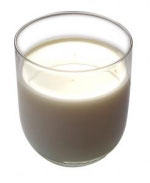How food affects a child’s mood & behaviour

What a child eats is important not only for their nutritional requirements but it also affects their mood, their behaviour and their day.
There is clear, established a link between additives and food colourings and children’s behaviour and mood.
What a child eats or doesn’t eat can in fact affect their day and mood.
There are approximately 400 food additives in Australia that must be described by name or number on the ingredients list.
At least 60 of these additives have been linked to children’s behavioural problems.
How does food affect behaviour and mood?
As a result of the constant research results, additives and colourings are being called to be removed from everyday foods and drinks that children consume.
Although it must be noted that research shows that naturally forming food chemicals can also have the same symptoms as food additives if consumed in large amounts or by a person sensitive to them.
Food additives in so many foods can alter, contribute and cause some behaviour in children. Behaviours ranging from temper tantrums, disruptive behaviour, to mood swings, learning difficulties, lack of concentration and much more. It can change the behaviour up to half of our children with just the additives and colourings added to the food they eat.
It’s important to note that if an additive is less than 5% of the ingredients it is not required to be listed on the ingredients list.
A perfect example to highlight this glitch in labeling is the antioxidant BHA (320) found in vegetable oil which is often in biscuits and frozen chips is not listed as it is less than 5%. This additive is known to cause behavioural problems if eaten regularly.
Types of behaviour influenced by food
Behaviours will vary depending on the personality of the child.
For example, a child who is generally a quiet child will display different behavioural effects than a child who is generally restless.
- Sleep issues such as frequent night waking or trouble getting to sleep.
- Trouble with their temper and/or aggression.
- Lack of concentration.
- Irritable.
- Talk too much.
- Temper tantrums.
- Defiance.
- Hyperactivity.
- Disruptive behaviours such as interrupting others, inability to sit still, etc.
Minimizing behaviour influenced by food
We can help a child maintain their mood during the day rather than have highs and lows by:
- Eating breakfast. It has been proven to improve a child’s’ performance and reduce symptoms such as hyperactivity and even depression.
- Provide lots of fluids. This is to prevent dehydration. Children can be more easily affected and can result in headaches as well.
- Give regular meals as well as snacks. This can help alleviate the whinges. children often whinge when they are hungry.
- Avoid too many processed foods and wherever possible include plenty of fruit and vegetables.
- Read ingredient labels.
- Choose preservative free where possible.
- Choose colour free where possible.






